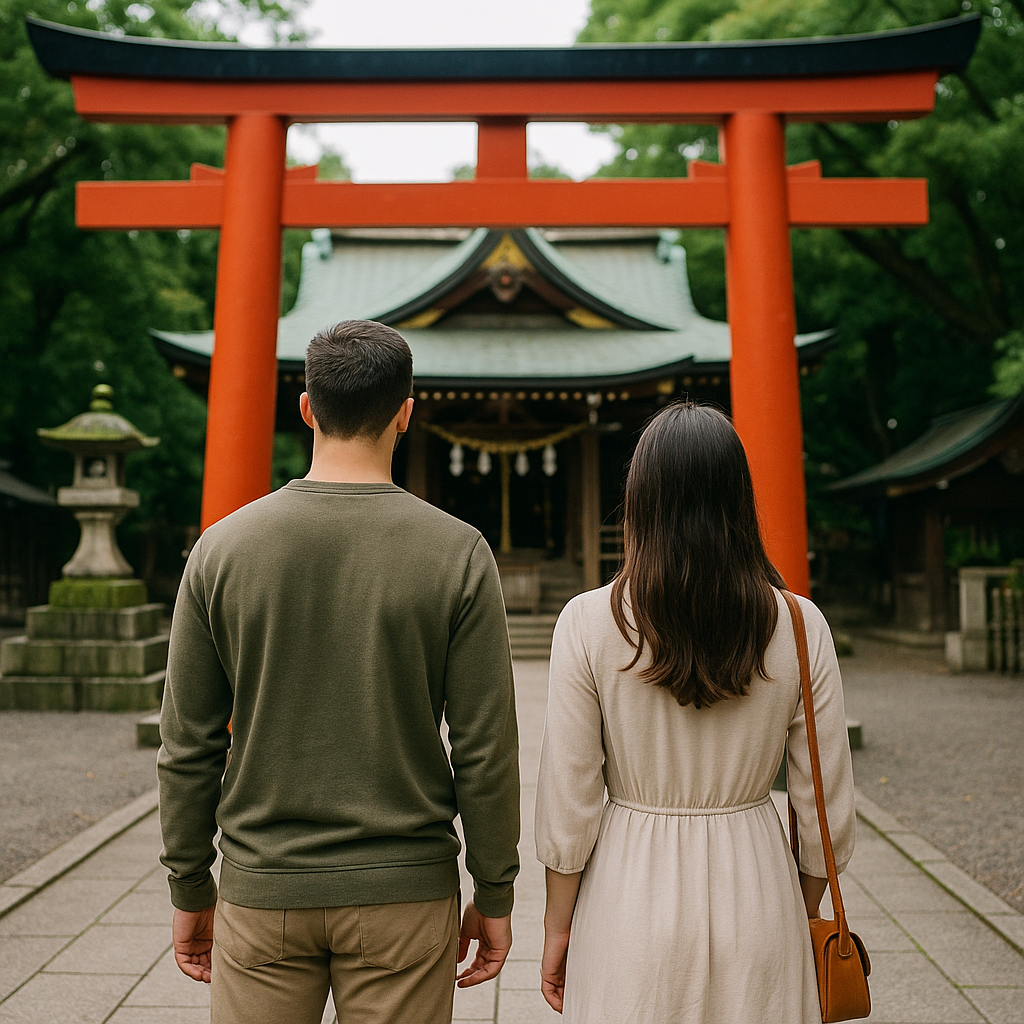
Visiting a Japanese shrine is more than just sightseeing—it’s a peaceful, spiritual experience. Whether you’re exploring the famous Meiji Shrine in Tokyo or a small local shrine in Kyoto, what you wear can show respect for the sacred space.
🌟 Introduction
In this guide, we’ll cover:
- The basics of appropriate attire
- Seasonal suggestions
- What to avoid
- Cultural tips to help you blend in
Let’s make your shrine visit respectful and stylish!
👘 General Guidelines
Shrines are sacred places, so dressing modestly and respectfully is key. You don’t need to wear anything traditional, but you should avoid overly casual or revealing outfits.
✅ Do:
- Wear clean, neat clothes
- Choose outfits that cover your shoulders and knees
- Opt for quiet colors and simple designs
❌ Don’t:
- Wear tank tops, crop tops, or short shorts
- Bring flashy or offensive logos
- Wear beachwear or sportswear
👣 Footwear Matters
Many shrines have steps or gravel paths, so wear comfortable shoes. While you don’t need to remove your shoes at most shrines, some small buildings or inner areas may require it.
🚗 Best Choices:
- Flat shoes or sneakers
❌ Avoid:
- High heels or sandals
💡 Pro tip: Wear socks just in case you’re asked to remove your shoes.
🌮 Seasonal Suggestions
| Season | Recommended Outfit |
|---|---|
| Spring | Light jacket, long pants, comfortable shoes |
| Summer | Breathable, modest clothing, hat for sun |
| Autumn | Layers for changing temps, muted tones |
| Winter | Warm coat, scarf, gloves — shrines can be chilly |
☂️ Rainy season? Bring a clear umbrella (popular in Japan) and avoid muddy shoes.
📷 Cultural Etiquette (Quick Reminders)
- Bow before entering the torii gate (the large red archway)
- Walk to the sides of the path; the center is for deities
- Wash hands at the purification fountain before praying
- Silence your phone and speak quietly
- Remove hats or sunglasses during prayer
🧙♀️ Can You Wear Kimono or Yukata?
Yes, absolutely! In fact, wearing traditional Japanese attire is encouraged and often celebrated. Many tourists rent kimono near shrines in Kyoto or Asakusa.
🔍 Just remember:
- Walk carefully
- Keep your obi (belt) tied properly
- Don’t sit on the ground in a rented kimono
🌸 Final Thoughts
Dressing appropriately not only shows respect for the culture but also helps you feel more connected to the tranquil atmosphere of the shrine. Whether you choose casual-modern or traditional wear, comfort and modesty go a long way.
Enjoy your visit—and don’t forget to bow twice, clap twice, and bow once when offering a prayer ✨